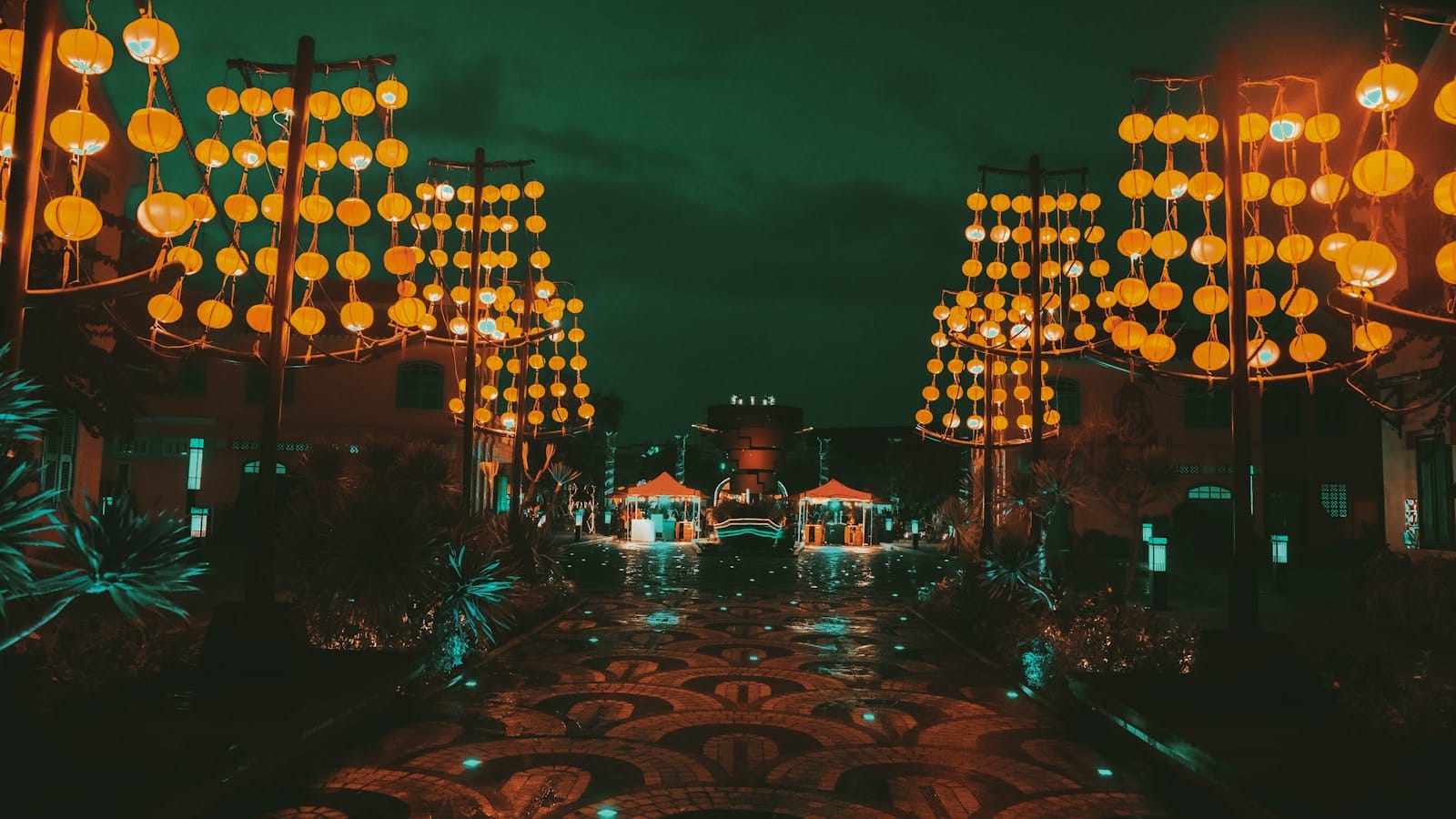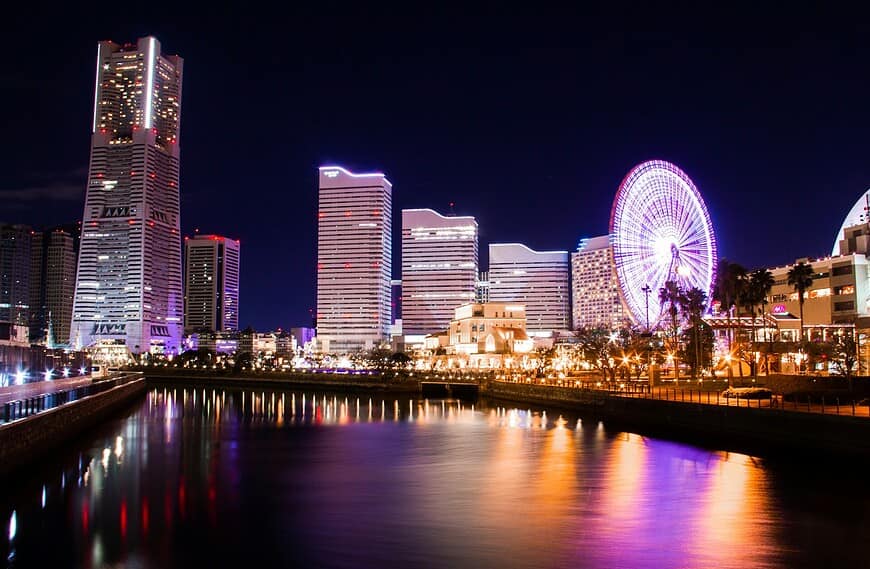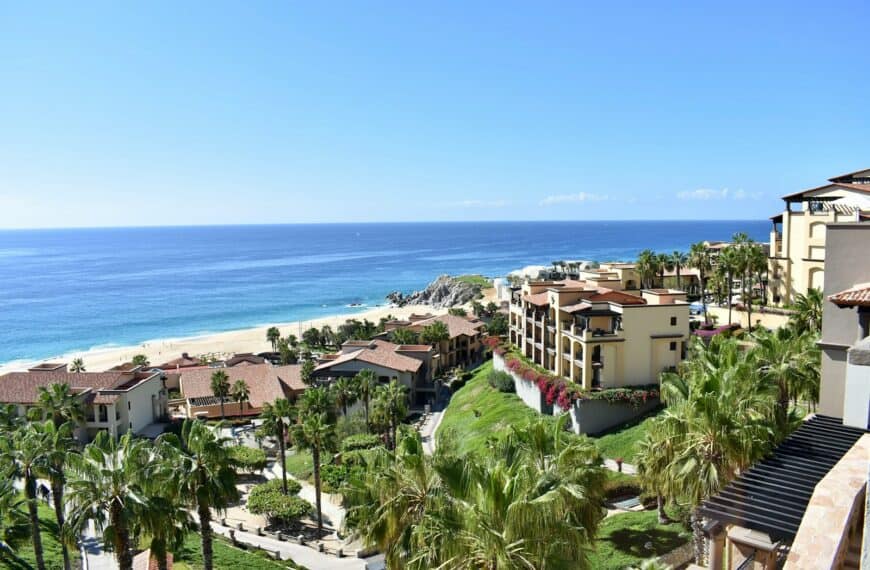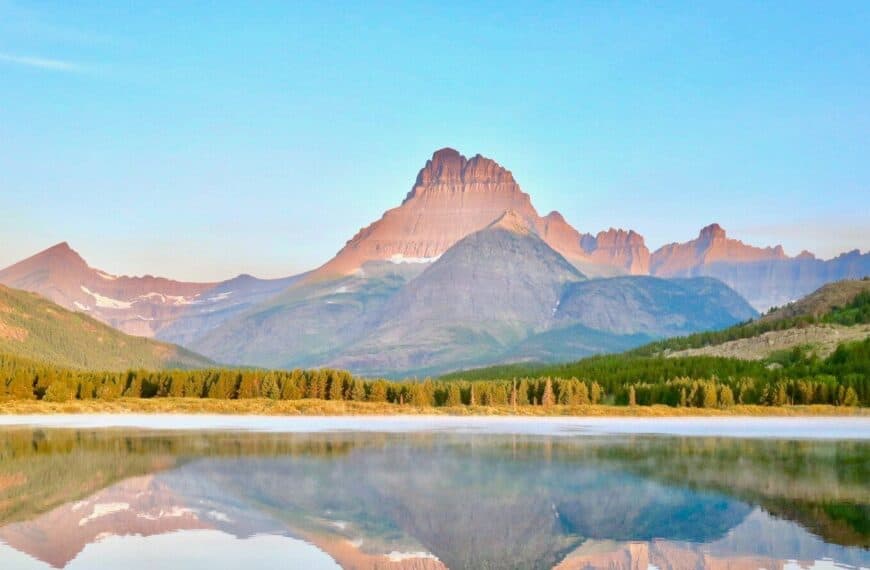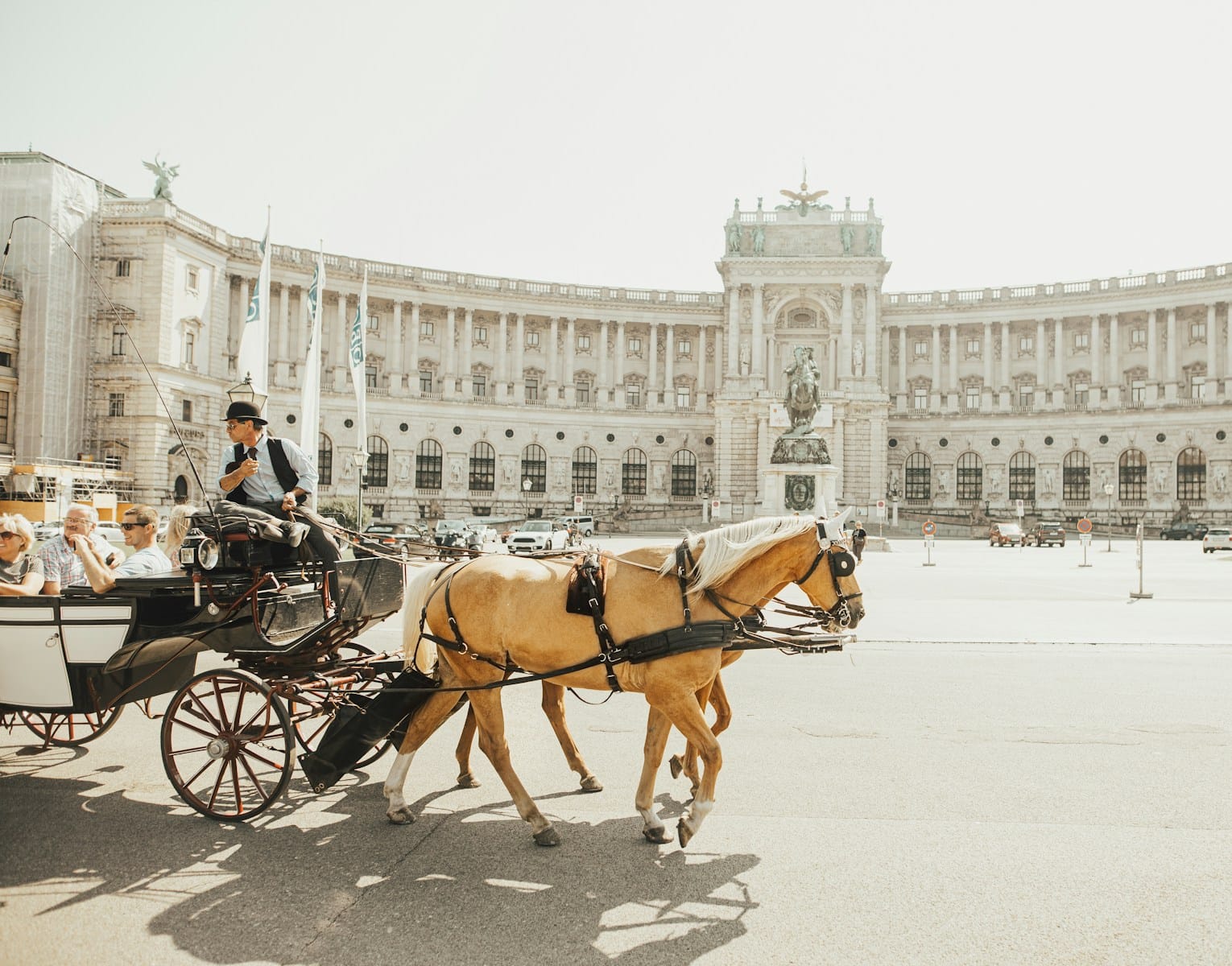Vietnam Travel Guide for Halong Bay and Culture
Intro to Vietnam Travel Guide
Vietnam is a land of contrasts where bustling cities meet tranquil rice paddies, and limestone cliffs rise from emerald seas. From Hanoi’s colonial boulevards and street food stalls to the lantern-lit streets of Hoi An and the karst towers of Ha Long Bay, the country offers travelers an intoxicating blend of history, culture, and nature. Add in the warmth of its people and a legendary food culture, and it’s no wonder Vietnam has become one of Asia’s most compelling destinations. This Vietnam travel guide gives you everything you need to plan a trip that balances exploration with relaxation.
Start planning your trip with our complete Vietnam tour guide — from highland retreats and imperial cities to island escapes and vibrant food scenes.
Travel Destinations in Vietnam
Da Nang | Dalat | Ha Long Bay | Hanoi | Ho Chi Minh City (Saigon) | Hoi An | Hue | Nha Trang | Phong Nha-Ke Bang National Park | Phu Quoc | Sapa | Vung Tau
💡Quick Facts:
Destination: Vietnam
Continent: Asia
Country: Socialist Republic of Vietnam
Administrative Divisions: 58 provinces + 5 centrally controlled municipalities (Hanoi, Ho Chi Minh City, Da Nang, Hai Phong, Can Tho)
Area: 331,212 km² (127,882 mi²)
Population: ~100 million
Density: ~302 people per km²
Capital: Hanoi
Largest City: Ho Chi Minh City (Saigon)
Regions/Subregions: Northern Vietnam, Central Vietnam, Central Highlands, Southern Vietnam, Mekong Delta
Official & Regional Languages: Vietnamese (official); English increasingly common in tourism; minority languages include Khmer, Cham, Hmong, Tay
Currency: Vietnamese Dong (VND, ₫)
Time Zone(s): Indochina Time (UTC+7, no daylight saving)
Airports: Noi Bai International (HAN, Hanoi), Tan Son Nhat International (SGN, Ho Chi Minh City), Da Nang (DAD), Cam Ranh (CXR, Nha Trang), Phu Quoc (PQC)
Climate: Tropical monsoon; hot, humid summers and mild winters in north; year-round warmth in south; typhoon risk in central coast
Known For: Ha Long Bay (UNESCO), Hoi An Ancient Town, Mekong Delta, Cu Chi Tunnels, street food, coffee culture, rice terraces in Sapa
🛂Arrival Info:
Visa Policy: Visa-free entry for 25+ countries (most ASEAN, some EU, Japan, South Korea)
Visa Required: Most others; e-Visa available online for 90+ nationalities
Visa on Arrival: Phased out; replaced by e-Visa system
Max Tourist Stay: 15–90 days depending on nationality and visa type
Onward Travel: Proof of onward/return ticket may be requested
Immigration Authority: Vietnam Immigration
🏥Health Info:
Vaccines Required: None for entry
Vaccines Recommended: Hepatitis A, Typhoid, Hepatitis B, Japanese Encephalitis (for rural stays), Rabies (long-term travelers)
Health Risks: Dengue fever, malaria in some rural areas, food/waterborne illness, air pollution in Hanoi/Ho Chi Minh City
Hospitals: International-standard hospitals in Hanoi, Ho Chi Minh City, Da Nang; limited care in rural areas
Insurance: Strongly advised; include evacuation coverage
Emergency Number: 115 (ambulance), 113 (police), 114 (fire)
🚑 Check travel insurance options for travel emergencies, delays, and medical needs abroad — Get coverage here
💉 Stay Informed with Official Updates: WHO – International Travel & Health | CDC – Travel health updates
🚨Travel Advisory:
Safety Level: Generally safe; petty theft in tourist zones
Petty Crime: Pickpocketing, bag snatching, taxi scams in Hanoi, Ho Chi Minh City
Natural Risks: Typhoons (Jun–Nov), flooding in Mekong Delta, landslides in northern mountains
🌍Track Real-Time Official Updates: US Travel Advisory | UK Foreign Travel Advice | Government of Canada | NZ SafeTravel
🥳Holidays:
New Year’s Day: Jan 1
Tet (Lunar New Year): Jan/Feb (dates vary) – biggest holiday, lasts several days
Hung Kings’ Temple Festival: Apr (date varies by lunar calendar)
Reunification Day: Apr 30
International Labour Day: May 1
National Day: Sep 2
(Local: Mid-Autumn Festival Sep/Oct, Hue Festival every 2 years, Da Nang International Fireworks Festival Jun/Jul)
💰Visitor Info:
Currency: Vietnamese Dong (VND, ₫)
Cards & ATMs: ATMs widespread in cities; credit/debit accepted in hotels and large restaurants, cash preferred in rural areas
Tipping: Not customary, but appreciated (5–10% in restaurants, guides/drivers)
Tourist Taxes: Included in hotel bills and airfare
Average Budget: $25–50/day (budget), $60–120/day (mid-range), $150+ (luxury)
🛫Airports:
Noi Bai International Airport (HAN): Hanoi
Tan Son Nhat International Airport (SGN): Ho Chi Minh City
Da Nang International Airport (DAD): Central coast access
Cam Ranh International Airport (CXR): For Nha Trang beaches
🧳 Delayed or canceled flight? Check if you’re eligible for compensation
🚍Transport:
Local Transit: Buses, taxis, Grab (ride-hailing), cyclos (pedicabs)
Intercity: Trains (Reunification Express connects Hanoi–Ho Chi Minh City), domestic flights common
Motorbikes: Popular rental option; traffic chaotic
Driving Laws: Right-hand traffic; IDP recommended; helmets mandatory on motorbikes
🚗 Book reliable airport transfers and in-city rides in advance. Reserve your ride here
🛰️Connectivity:
Mobile Networks: Viettel, Vinaphone, Mobifone
Coverage: Good in cities, variable in remote mountains
eSIM Options: Available at airports and global providers (Airalo, Holafly)
Public Wi-Fi: Hotels, cafes, airports; widespread but variable speeds
🛜 Stay connected abroad with affordable eSIM data packs. Get your eSIM here
📜Laws & Etiquette:
Drinking Age: 18 (loosely enforced)
Smoking Laws: Banned in public indoor places; still common outdoors
Dress Code: Casual; modest attire required for temples/pagodas
Etiquette: Remove shoes before entering homes/temples; avoid public displays of affection in rural areas
LGBTQ+ Safety: Social acceptance improving; major cities LGBTQ+ friendly
👮Emergency Info:
Emergency Number: 113 (police), 115 (ambulance), 114 (fire)
Tourist Info: Vietnam Tourism Board
🗺️US/UK Embassies Abroad: US Embassies | UK Embassies
🏛️ Embassy locator tools: Embassies Worldwide
🌞Weather:
North (Hanoi, Ha Long): Winter (Dec–Feb) 10–20°C (50–68°F), Summer (May–Sep) 25–35°C (77–95°F), heavy rain
Central (Hue, Da Nang): Dry Feb–Aug, wet Sep–Jan, typhoon risk
South (Ho Chi Minh City, Mekong Delta): Dry Nov–Apr 25–35°C (77–95°F), Wet May–Oct humid, heavy rains
Best Time to Visit: Nov–Apr for most regions; shoulder seasons good for fewer crowds
🌦️ Stay prepared—check the weather forecast for your destination — Weather Forecast
Discover Vietnam Region by Region
Northern Vietnam
- Hanoi – The capital blends French colonial charm with chaotic Old Quarter streets, buzzing motorbikes, and rich history. Don’t miss the Ho Chi Minh Mausoleum or a water puppet show.
- Ha Long Bay – A UNESCO site with thousands of limestone islands best explored on overnight cruises.
- Sapa & Ha Giang – Mountainous areas famous for terraced rice fields, ethnic minority villages, and trekking routes.
Central Vietnam
- Hue – Once the imperial capital, Hue offers palaces, pagodas, and the Perfume River.
- Hoi An – A UNESCO-listed town with lantern-lit evenings, tailor shops, and a fusion of cultures.
- Da Nang – A coastal hub with sandy beaches, the Marble Mountains, and the Golden Bridge in Ba Na Hills.
Southern Vietnam
- Ho Chi Minh City (Saigon) – Vietnam’s economic powerhouse, known for French architecture, markets, and the War Remnants Museum.
- Mekong Delta – A watery maze of floating markets, rice paddies, and villages. Boat tours reveal the rural life of southern Vietnam.
- Phu Quoc Island – A tropical island with pristine beaches, luxury resorts, and coral reefs for diving and snorkeling.
Can’t-Miss Places in Vietnam
- Hanoi Old Quarter – Lively streets packed with cafes, markets, and historic houses.
- Ha Long Bay – Cruising past limestone karsts at sunrise is a bucket-list experience.
- Sapa Rice Terraces – Trek among lush green fields with homestays in local villages.
- Hue’s Imperial City – Ancient walls and temples telling stories of dynasties.
- Hoi An – Lantern-lit nights, riverside dining, and world-renowned tailors.
- Da Nang’s Golden Bridge – A surreal walkway held by giant stone hands.
- Ho Chi Minh City – French colonial landmarks and energetic nightlife.
- Mekong Delta – Floating markets like Cai Rang reveal a unique way of life.
- Phu Quoc – Stunning beaches and seafood shacks under swaying palms.
- Ha Giang Loop – A remote mountain road trip with dramatic scenery.
How to Decide Where to Travel in Vietnam
- History Lovers – Visit Hanoi’s museums, Hue’s imperial city, and the Cu Chi Tunnels near Ho Chi Minh City.
- Adventure Seekers – Trek Sapa or Ha Giang, ride motorbikes along coastal roads, or kayak in Ha Long Bay.
- Foodies – Hanoi for pho and bun cha, Hoi An for cao lau noodles, and Saigon for bánh mì.
- Beach Travelers – Relax in Da Nang, Nha Trang, or Phu Quoc.
- Multi-Stop Travelers – Combine Hanoi, Hoi An, and Ho Chi Minh City for a classic north-to-south journey.
Getting Around Vietnam
Urban Travel
- Motorbike Taxis (Xe Om & Grab) – Affordable and quick, available via apps. Helmets required.
- Buses & Metro – Ho Chi Minh City and Hanoi have developing metro systems and bus routes.
- Walking – Old Quarters are best explored on foot, though traffic requires caution.
Cross-Country Travel
- Domestic Flights – VietJet, Bamboo Airways, and Vietnam Airlines connect cities quickly.
- Trains – The Reunification Express links Hanoi and Ho Chi Minh City, with scenic coastal routes near Da Nang.
- Buses – Sleeper buses connect most towns, popular with budget travelers.
Rural Travel
- Cycling & Motorbikes – Popular in Sapa, Hoi An, and countryside areas.
- Boats – Essential for Mekong Delta tours and island trips.
Budgeting Your Trip to Vietnam
- Meals – Street food dishes like pho cost $2–4. Mid-range restaurants $10–15, fine dining $30+.
- Lodging – Hostels $8–15, mid-range hotels $25–60, luxury resorts $120+. Homestays $10–20 add cultural immersion.
- Transport – Domestic flights $40–100, trains $20–60, buses $10–20.
- Tours – City tours $20–40, Ha Long Bay cruises $100–250, multi-day treks $100–300.
When to Visit Vietnam
- North (October–April): Cool and dry, ideal for Hanoi, Sapa, and Ha Long Bay. Summer (May–September) is hot and humid with rains.
- Central (February–August): Dry and sunny; typhoons may affect autumn.
- South (November–April): Dry season with pleasant heat; rainy season runs May–October.
- Best Overall: March–April and October–November for balanced weather nationwide.
Festivals & Events in Vietnam
- Tet (Lunar New Year, January/February) – The most important holiday, marked with family reunions, fireworks, and markets.
- Hue Festival (April/May, biennial) – Celebrates Vietnam’s heritage with parades and performances.
- Mid-Autumn Festival (September) – Lantern processions and mooncakes across the country.
- Hoi An Lantern Festival (monthly) – On every full moon, lanterns illuminate the ancient town.
- Perfume Pagoda Festival (February/March) – A pilgrimage to one of Vietnam’s most sacred sites.
Must-Do Experiences in Vietnam
- Cruise Ha Long Bay – Sleep aboard a junk boat, kayaking at hidden lagoons.
- Trek in Sapa – Stay with ethnic minority families in mountain villages.
- Cycle Hoi An’s Countryside – Ride past rice paddies, water buffalo, and riverside temples.
- Visit Hue’s Imperial Citadel – Explore ancient palaces and pagodas.
- Cook Vietnamese Cuisine – Join cooking classes in Hanoi or Hoi An.
- Explore Cu Chi Tunnels – Crawl through historic wartime tunnels near Saigon.
- Shop Hanoi’s Old Quarter – Lively markets filled with handicrafts and street eats.
- Relax on Phu Quoc Beaches – White sand and calm seas ideal for unwinding.
- Ride the Ha Giang Loop – A motorbike journey through stunning mountain landscapes.
- Savor Street Food – From bánh mì to bun cha, Vietnamese flavors are unmissable.
See the highlights and hidden gems with guided Vietnam tours, while also uncovering authentic local experiences among the top things to do in Vietnam. Secure your spot now with free-cancellation options. We may earn a commission if you book through our links — at no extra cost to you.
Adventure and Water Activities in Vietnam
- Kayaking in Ha Long Bay – Paddle beneath towering limestone cliffs.
- Diving in Nha Trang – Explore coral reefs with tropical fish and clear waters.
- Kitesurfing in Mui Ne – Strong winds make it Vietnam’s watersport capital.
- Hiking in Phong Nha – Trek through caves and jungles in a UNESCO-listed park.
National Parks & Outdoor Adventures
- Phong Nha-Ke Bang National Park – Home to Son Doong, the world’s largest cave.
- Ba Be National Park – Mountain lakes, waterfalls, and ethnic villages in northern Vietnam.
- Cat Ba National Park – A mix of jungles and karst landscapes in Ha Long Bay.
- Cúc Phương National Park – Vietnam’s first national park, rich in biodiversity and primate centers.
History & Heritage in Vietnam
- Hue’s Imperial City – Palaces and temples of the Nguyen dynasty.
- My Son Sanctuary (near Hoi An) – Ancient Hindu temple ruins of the Cham civilization.
- Hanoi’s Old Quarter – French colonial and Vietnamese influences in lively streets.
- Cu Chi Tunnels – War-era underground networks outside Ho Chi Minh City.
- War Remnants Museum – A sobering look at Vietnam’s modern history.
Suggested Itineraries for Vietnam
3-Day Itinerary
Day 1: Explore Hanoi’s Old Quarter, Hoan Kiem Lake, and evening street food.
Day 2: Take a day trip to Ha Long Bay with a cruise among limestone karsts.
Day 3: Visit the Temple of Literature and museums before departure.
5-Day Itinerary
Day 1: Start in Hanoi, exploring its temples and Old Quarter.
Day 2: Full-day Ha Long Bay cruise with kayaking and seafood meals.
Day 3: Fly to Hue, visit the Imperial City and riverside pagodas.
Day 4: Travel to Hoi An, enjoy its lantern-lit streets and night market.
Day 5: Cycle through Hoi An’s rice paddies and tailor a custom outfit before departure.
7-Day Itinerary
Day 1: Explore Hanoi’s highlights.
Day 2: Overnight cruise in Ha Long Bay.
Day 3: Return to Hanoi, fly to Hue, and explore the Imperial City.
Day 4: Drive to Hoi An, stopping at Marble Mountains en route.
Day 5: Enjoy cooking classes, cycling tours, and lantern festivals in Hoi An.
Day 6: Fly south to Ho Chi Minh City, explore colonial landmarks and Ben Thanh Market.
Day 7: Day trip to the Mekong Delta’s floating markets before departure.
10-Day Itinerary
Day 1: Begin in Hanoi with museums and Old Quarter walks.
Day 2: Cruise Ha Long Bay with an overnight stay.
Day 3: Return to Hanoi, then fly to Hue.
Day 4: Explore Hue’s palaces, tombs, and Perfume River.
Day 5: Drive to Hoi An, visit Marble Mountains, and explore the old town.
Day 6: Enjoy a day of cycling or cooking in Hoi An.
Day 7: Fly to Ho Chi Minh City, tour French landmarks, and street markets.
Day 8: Visit the Cu Chi Tunnels and return for Saigon nightlife.
Day 9: Mekong Delta excursion for floating markets and villages.
Day 10: Relax in Ho Chi Minh City before departure.
Unique Stays & Accommodations
- Hoi An Boutique Hotels – Lantern-lit courtyards and riverside views.
- Sapa Homestays – Stay with local families in mountain villages.
- Ha Long Bay Cruises – Overnight luxury junks with onboard dining.
- Phu Quoc Resorts – Beachfront bungalows blending luxury and seclusion.
Eating in Vietnam: What to Try
- Pho – Iconic noodle soup with beef or chicken.
- Bánh Mì – French-inspired baguette sandwiches with Vietnamese fillings.
- Bun Cha – Grilled pork with noodles, herbs, and dipping sauce.
- Cao Lau – A regional noodle dish found in Hoi An.
- Spring Rolls (Gỏi cuốn) – Fresh rolls of herbs, shrimp, and vermicelli.
- Egg Coffee – A Hanoi specialty of rich coffee topped with whipped egg.
Staying Safe in Vietnam
- Traffic Caution – Motorbike-heavy streets require careful crossing.
- Health – Drink bottled water; carry mosquito repellent in rural areas.
- Scams – Negotiate taxi fares or use ride-hailing apps to avoid overcharging.
- Cultural Etiquette – Dress modestly at temples, remove shoes before entering homes.
Final Planning Tips for Vietnam
- Visa Policy – Many nationalities require visas; e-visas available online.
- Currency – Vietnamese Dong (VND); ATMs are widespread.
- Connectivity – SIM cards at airports are affordable; 4G widely available.
- Transport Apps – Grab app for taxis, Baolau for booking buses/trains.
- Packing – Light clothing, rain jacket, and sturdy shoes for trekking.
- Insurance – Recommended for medical, cancellation, and adventure coverage.
Plan Smarter, Travel Better
Vietnam rewards curious travelers with a mix of culture, landscapes, and unforgettable flavors. Whether gliding across Ha Long Bay, trekking through rice terraces, or simply sharing coffee with locals, each moment reveals a new side of the country. With this Vietnam travel guide, you’re ready to plan a trip full of discovery.
Continue Your Journey Beyond Vietnam
- Cambodia – Visit Angkor Wat, Phnom Penh, and Mekong crossings that connect seamlessly with southern Vietnam.
- Laos – A slower pace awaits with Luang Prabang’s temples, waterfalls, and Mekong cruises.
- Thailand – Easy flights link Vietnam to Bangkok, Phuket, or Chiang Mai for a cultural and beach extension.
- China – Border crossings near Hanoi connect to Yunnan province; Beijing and Shanghai are short flights away.
- Malaysia – Add Kuala Lumpur, Penang, or Langkawi for food and island getaways.
It’s Time to Experience Vietnam
Vietnam is more than a destination — it’s an immersion into culture, cuisine, and community. From Hanoi’s street food to Hoi An’s lanterns and Phu Quoc’s beaches, the country offers moments that stay with you long after you’ve left.
Begin planning today with this Vietnam travel guide and let its rhythm carry you through an unforgettable journey.

